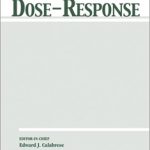Anandalal Gayen, Dheeraj Mondal, Poonam Bandyopadhyay, Debbethi Bera, Durga Sankar Bhar, Sukhen Das, Raj Kumar Manchanda, Anil Kumar Khurana, Debadatta Nayak, Biplab Kumar Paul, Papiya Nandy
Effect of Homeopathic Dilutions of Cuprum Arsenicosum on the Electrical Properties of Poly(Vinylidene Fluoride-Co-Hexafluoropropylene)
Homeopathy, 2018, 107 (2), 130-136

Background We report the effects of nanoparticles in homeopathic preparations of copper salts on the electrical properties of polymer film. Previous work showed that the incorporation of metal-derived homeopathic medicines increases the dielectric constant and alternating current (AC) conductivity of an electroactive polymer film that is commonly used as a capacitor in the electronic industry. We report here the effect of dilution of one homeopathic medicine, Cuprum arsenicosum (CuAs), at 200C potency on the electrical properties of the polymer film of poly(vinylidene fluoride-co-hexafluoropropylene). Methods CuAs 200c was incorporated in the film by the solution casting method. The electrical characteristics were measured at different frequencies using an inductance, capacitance, and resistance meter. Fourier transform infrared spectroscopy (FTIR) was performed to detect phase change in the polymer film due to the incorporation of CuAs. Morphology and particle size were studied using field emission scanning electron microscopy (FESEM) and energy dispersive X-ray (EDX) spectroscopy. Results At 10 kHz frequency, both dielectric constant and AC conductivity increased approximately 18 times for the polymer film when incorporated with 2 mL CuAs at 200C potency. FTIR indicated the increase in conducting phase, while FESEM and EDX confirmed the presence of spherical CuAs particles. Conclusion The incorporation of CuAs in the electroactive polymer film enhances the conductivity and dielectric constant. We conclude that these changes arise from the change in phase of the polymer film, and because of the presence of two different metals that affects the interfacial polarization.








Lascia un commento
Devi essere connesso per inviare un commento.